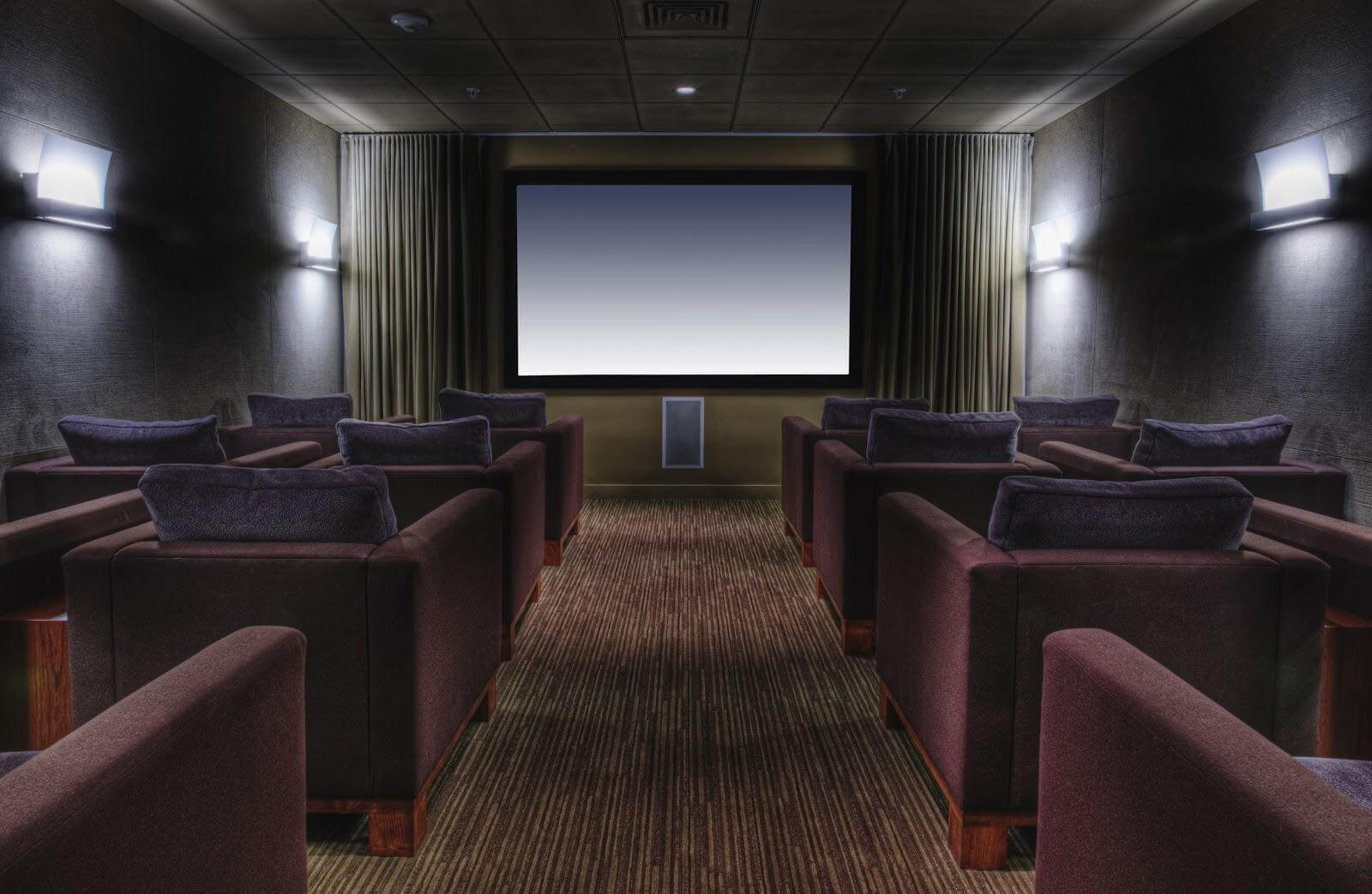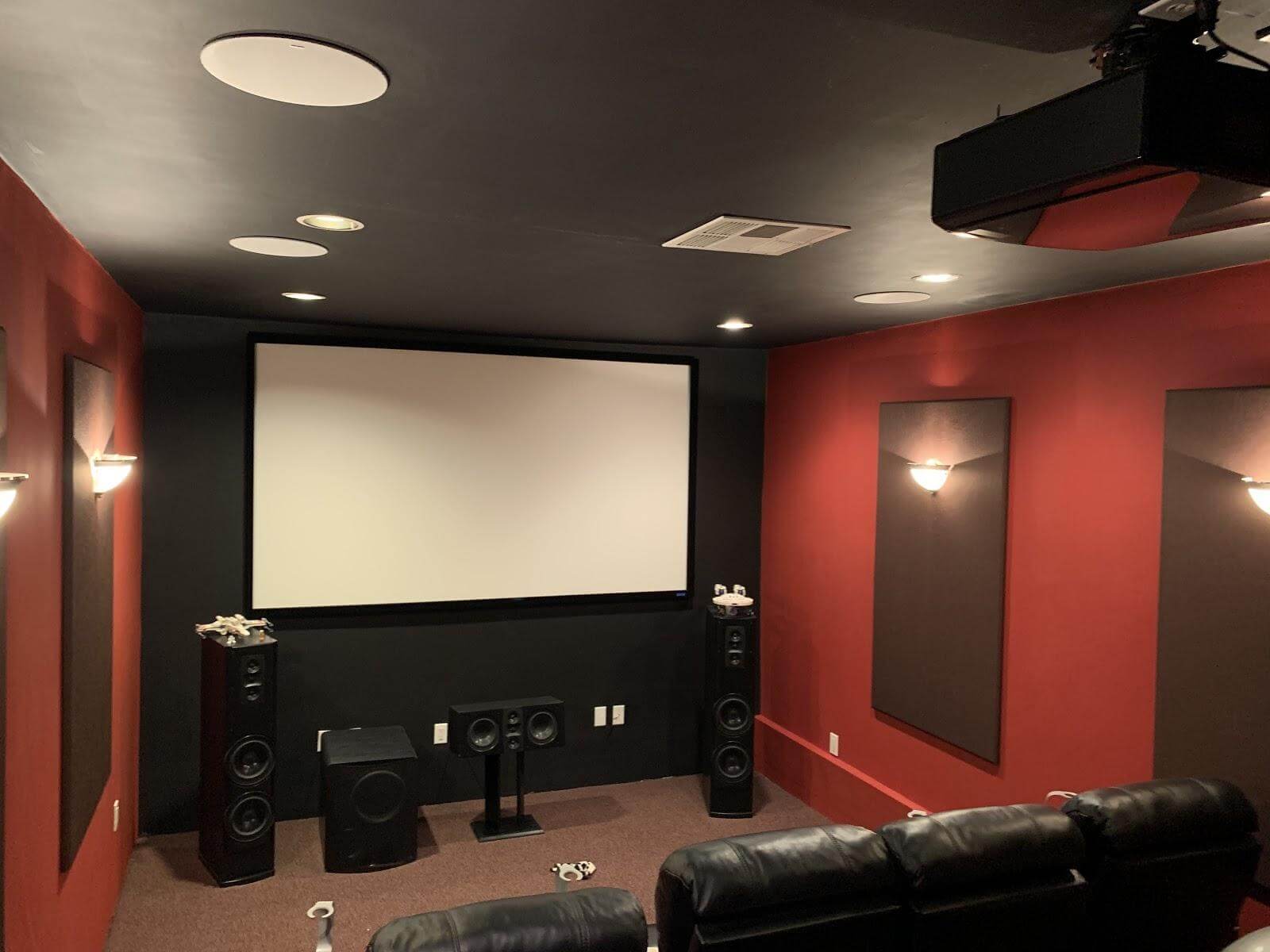For several people who have their own homes or are living on rent, owning a home theatre system may be a dream for them, but it doesn’t need to stay just a dream forever. People have been building and installing unique home theatre systems for quite a decade, and based on several of those ideas, here is a quick guide to assist you to start on the right path to building the perfect home theatre that you can have at your home. The guidance below can help you to find out everything you need to achieve a reliable, high-end home theatre.

Step 1: Analyze Your Theatre Room Space
A common mistake people make is picking out their theater screen or 4K UHD TV before really brooding about which size and shape are going to be the simplest and easiest fit for the living space. If you opt for a professional to do your home theatre then he or she will have it installed professionally. In this case, the professional advisor will create some engineering plans of the space, for you to follow and refer to. These plans will include the peak, width, and depth of the living room space, also because of the location of windows and doors. These plans will help you to decide everything be it simple or complex – what percentage of seats can fit comfortably within the room, the perfect spacing between seats and screen, locations of speakers, etc.
Step 2: Choose a Common Theme Around The Room
Some of the simplest home theaters around the world have unique themes supported by movies, books, locations, etc. If you would like to add any such theme to your theater, based on your own personal liking then detect something that’s important to you and incorporate it into every aspect of the space, from the wall sconces to the color of the ceiling.
This is an optional step to a degree, but the thought here is to understand exactly what vibe you’d want to achieve for your theatre space right from the start. This may affect the sort of seating you select, the décor, the lighting, and even the A/V equipment, so it’s better to be sure long before you begin picking out your screen or theater curtains. Or just attempt to get a transparent idea of what you would like for the space.
Step 3: Pick the Right Equipment Considering The Space
Once you’ve analyzed the kind of space you want to achieve and are available to a consensus on how large of a screen you’ll get, it’s time to select out all of the house theater equipment. There are many elements to think about, but here are the main factors to consider:
Screen: If there’s tons of ambient light in your theater space, choose a high-contrast screen during a dark gray or black color. And if you’re hiding speakers behind the screen, make certain to select a screen material that’s acoustically transparent in order that the speaker quality isn’t muffled.
Projector: There are various 4K UHD TVs that rivals the traditional projectors. This is for the user to get a better standard of high-quality visuals, while the old projector will still give that traditional cinema vibe. It is your duty to confirm what you like and if you go for a modern projector, then get a liquid-cooled projector that operates quietly and also has the acceptable capabilities for your accurate screen size.
Speakers: The standard of your speakers will make or break the cinematic experience in your home theatre. Don’t skimp by choosing off-the-shelf speakers that make subpar audio. Instead, invest in surround sound speakers which will be placed strategically throughout the space for truly exceptional audio.
Control System: To urge an equivalent level of relaxation and ease that you simply would have during a regular theater, it is best to integrate all of the stage elements into one control system that permits you to lower the lights, select the movie, activate the projector, and begin your show with just the push of a button!
Step 4: Implement the Plan Into Action!
Once all of the plans and equipment are selected, it’s time to implement. Counting on the present state of the space and therefore the scope of your goals for your theater, this phase might not take very long in the least. However, there are a couple of considerations you ought to keep in mind before taking the plunge! The first being hidden media – especially if you would like to use the space for just a home theatre, it’s important to put in the equipment in order that it are often hidden out of sight.
Even for dedicated home theaters, hiding away the equipment and cords keeps your home theatre design clean and clutter-free. Your advisor/contractor can design integrated cabinets to carry the equipment and even completely hide speakers within the walls and ceilings and behind the projector screen without compromising audio quality in the least.
The other thing to think about is that the networking requirements for your home theatre. 4K UHD streaming takes tons of bandwidth, so if you would like to enjoy your movie or show to the complete extent, you would like to optimize your network to support you with the increased load. Your home theatre contractor can analyze the wiring within the room and your current home networking solution to form sure that it’s able to handle 4K streaming.
Step 5: Optimize the System Fully
Once the equipment is in the situation, the project isn’t finished yet. The system must be optimized in order that you get full performance and delight from the screen, projector, speakers, lighting, etc. During this phase, you need to carefully test the space acoustics to make sure there aren’t any dead spots. Also, try the system to verify user-friendliness, and confirm that the projector is correctly set to offer the simplest picture clarity on the screen.
Learning The Basics Of Home Theater Systems – Image 1
Now that you are clear about your basics for your home theatre systems, here’s what you can learn about optimizing your TV for the best viewer’s experience. Learn here how high to mount TV and get started on your favorite shows.

Taylor is a freelance SEO copywriter and blogger. His areas of expertise include technology, pop culture, and marketing.










